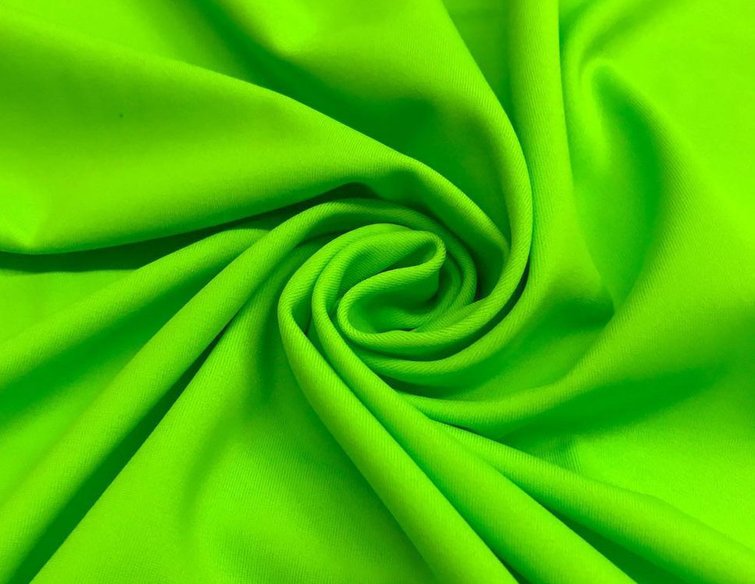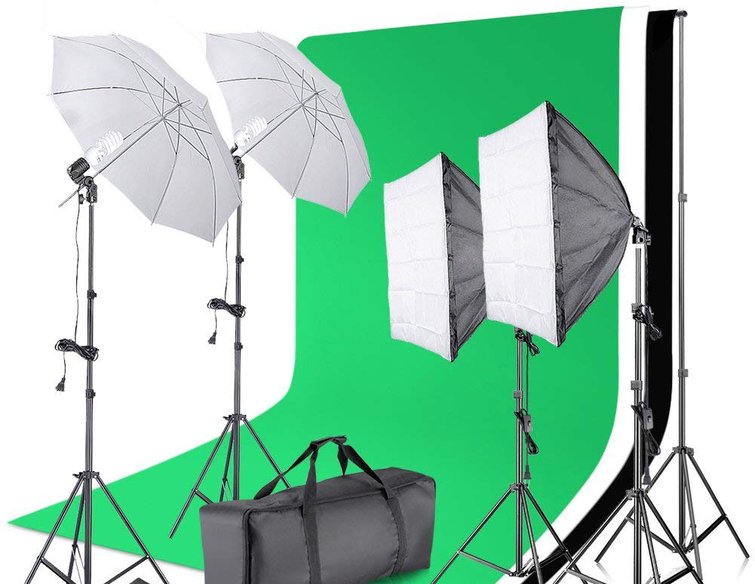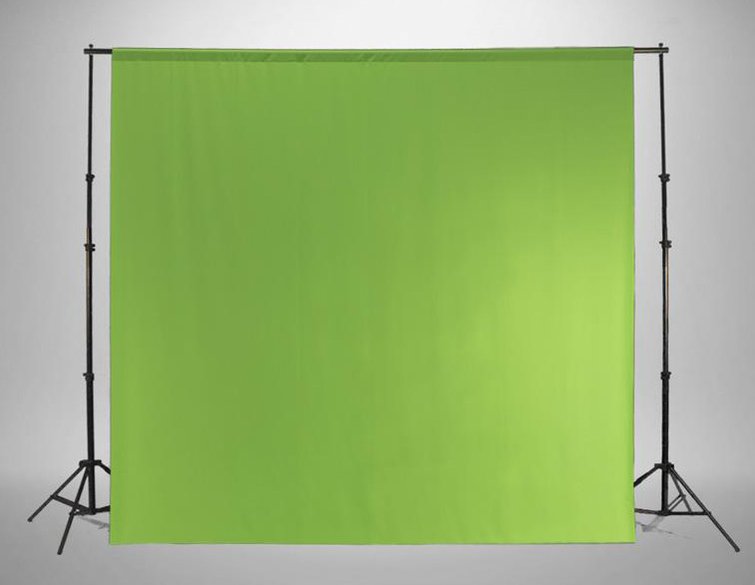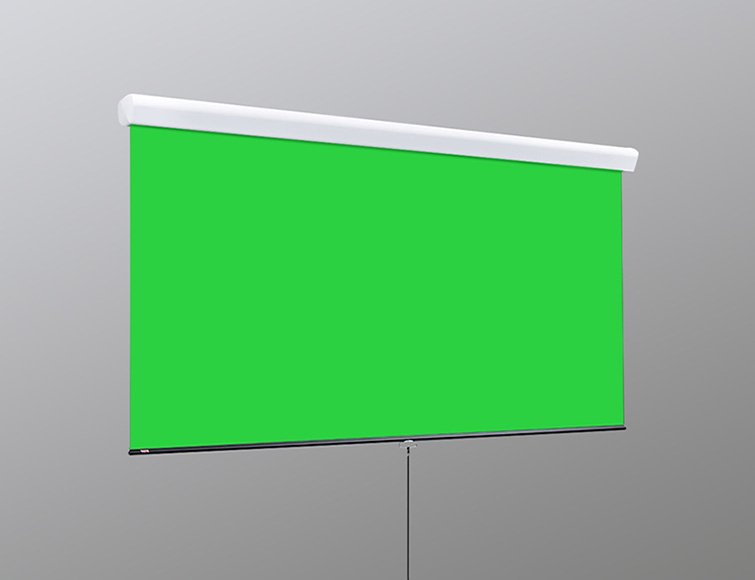
What to Buy for a Green Screen Kit (and Where to Buy It)
Here are some helpful tips on finding the right green screen kit—what kind of kit you should buy, what to look for, and where to buy them.
The green screen has become a necessity for productions of all sizes. When you’re looking to buy a kit for your home or studio, a simple online search will yield endless results trying to sell you a cheap curtain set, complete with stands destined to break on their first use. On top of the stand probably not being right, the material matters even more!
You need to know a few things before you purchase a kit. We’ll cover the must-haves in this article, and for anything else chroma key-related, check out our comprehensive guide to using and shooting with a green screen.
Screen Materials
The shining star of the kit is the screen itself—the kind of material you choose will drastically affect your ability to effectively chroma key. A material that can stretch, eliminating any wrinkles, is desirable to achieve a nice, even lighting across the screen, which is essential in post.
Another critical factor to consider is finding a material that’s not too reflective so that you don’t encounter any hot spots, and so the screen itself doesn’t reflect back onto your subject.

Paper
These backdrops tend to be fragile, unwashable, wrinkle easily, and often reflect too much light back at the subject. They’re also wasteful; if your “screen” rips or bends or folds, you probably will have to dispose of it.
For these reasons, I suggest passing on any paper kits. I’ve had a few instances where the smallest crease in the paper caused a shadow to form that I didn’t notice, making the key not as great as possible. Small stuff like this makes green screen work so tedious if you don’t have a super-secure and reliable setup.
Muslin/Cotton
Muslin is a dense material that will absorb light, sparing you the headaches of unwanted reflected light and color spill. Muslin’s downfall, however, is wrinkles. This can become a recurring nightmare if you have to break down the screen, move it, or store it multiple times throughout its use. It does, however, work well for a permanent installation in a studio where you can stretch the fabric, steam out any creases, and then set up for extended periods.
When packing or breaking down a cotton green screen, we recommend rolling the fabric instead of folding it so there won’t be as many wrinkles or creases the next time you need it. But, even in this process, rolling up the fabric means that you’d need a larger amount of space to store it—so this lends itself again to a studio space where you can leave it at.
Nylon/Spandex
This stretchable, wrinkle-resistant material is quick to set up and performs exceptionally well when pulled around a frame or stretched between stands. Often, this material can be too reflective, so watch out for any spill when lighting the backdrop. Most of the kits on the market use this type of material—and for good reason. High functionality at a lower price point is a significant plus.
Using Your Phone Screen
While this is meant for your niche types of shots, using a green screen on your phone is another example of how you can key a designated area out.
Be mindful of reflections that your screen will naturally have, but also reflections that your keyed image needs to have as well to look realistic. We’ve made a tutorial on this very subject that you can watch below!
Screen Color

Some argue that you need a specific shade of green for your backdrop. But, honestly, as long as nothing in the foreground is close to being the same color as your screen, you should be fine.
This is the reason many professionals also use blue, or even red, depending on what’s being filmed. You can chroma-key any color out from a shot; bright green tends to be used the least on set, making the task easier.
So with that in mind, it’s important to make sure your subjects are not wearing green. You can easily communicate this to them before they get to set, or you can include this in the shot list/breakdown/itinerary the day before.
Green Screen Kits
Now that you know what to look for, which green screen kit is right for you? Here is a breakdown of some of the top options, based on price, size, and convenience.
The Neewer Budget Kit

Neewer has become a dominant force for affordable gear that performs well and lasts long, and with good reason. Neewer currently boasts a 4.4-star rating with over 751 reviews on Amazon. There are hundreds of other kits that are extremely similar, but this kit rises to the top of the bargain bin at only $190.99.
This massive package boasts a 6×9 screen that includes a white and black backdrop, an 8.5×10 stand support system, six clamps, four light stands, two umbrellas, two softboxes, four daylight bulbs, and bags to carry the kit around. The bags are really the selling point for me.
Personal experience dictates that while the gear might feel cheap, this kit will get the job done. Note that the lights included may be enough to get the desired outcome, but you should really regard them as filler—that is to say, cheap lights that make the entire package seem more appealing, but they’re not professional grade. So just having these extra lights on hand will only help you get a nice, big, evenly-lit green screen.
This muslin seamless is great for beginners (or temporary needs), but it may not be the best option if you’re looking for a permanent solution to stand the test of time. Be sure to secure your stands with this kit so the entire backdrop doesn’t come tumbling down on your subject.
Composite Components Pro Kit

At over double the price of the Neewer screen ($435), with far fewer bells and whistles, this kit from Composite Components also comes with true professional quality. The company touts twenty years of Hollywood partnerships and a résumé that features Life of Pi and The Amazing Spider-Man, so it must be legit, right?
The screen is made of stretchable nylon spandex that features their proprietary chroma green pigment. Composite Components actually create custom green screen film sets that span hundreds of feet, and the seamless one included in this kit comes from the leftover material from these builds. The kit features a nice backdrop stand and a carrying case, recommended for those who want professional-grade material and don’t mind the higher costs that come along with it.
LastoLite Panoramic Background Landscape Kit

This panoramic green screen kit from LastoLite features a whopping thirteen-foot spread, split into three easily assembled sections stretched around a solid aluminum frame. This large, solid construction makes it a great choice for scenes featuring multiple actors, large set pieces, or blocking out an entire wall in a studio. Think multiple subject interviews or conversations that you might need to film.
For instance, I just filmed a three-person discussion “webinar” that needed a backdrop that covered all three. Something like this would have been beneficial. The material is cloth-based, with a nice, felt-like texture that helps fight any unwanted reflections. This kit is the largest of all the kits mentioned here, but it’s also the most expensive, at over $500. To help cut costs, you can purchase the screen for about $150, then build the frame yourself, much like this YouTuber Emerald Coast TV did with PVC pipes. DIY approaches will never go out of style.
Sorry to interrupt the flow of this list, but if you want a refresher or a first-time breakdown of how to light a green screen, check out our past coverage from Todd Blankenship below:
Fotodiox Collapsible 5x7ft Portable Backdrop Kit

This kit from Fotodiox sets up quickly, transports easily, and stores with minimal space. If you find yourself working on the fly and often needing a quick chroma key option, this might be the best option.
It features a stand that can raise the screen to eight feet in the air. And with a five-foot wingspan, this should be plenty of space to plant a subject anywhere, anytime, to shoot what you need. The wrinkle-resistant background is flexible, is easily operated without the stand, and includes a blue screen on the reverse side, should the need for one arise. I think more of this one as a product screen. It’s just a nice, quick fix for any type of shot you need to get on the fly.
This process is different for each editing software. So let’s say you set up the green screen perfectly, you light it evenly, and you get an overall very clean shot to work with. What do you do? How do you actually key out the green screen? Here are some tutorials that should point you in the right direction.
- How to Remove Green Screen Video Background in Premiere Pro
- Easy Green Screen Removal in DaVinci Resolve
- How to Use Green Screen Footage in Final Cut Pro X
The Draper Silhouette Office Option

Draper Inc. offers some extremely high-end (and pricey) green screens of all sizes that you can permanently install onto a wall. Plus, it conveniently retracts into its own housing, replacing the need for stands. This green screen is perfect for those who rely on a green screen daily, especially those who need a green screen for streaming video game content. It’s also an investment, not just because of the money but because of the space it will permanently take up. Like the big LastoLite backdrop, you need to need this thing regularly.
This screen is wrinkle-resistant, time-efficient, well-made, and highly durable. It might not be much of a “kit,” but it could be the perfect option for saving space and time if it fits your needs.
Hopefully, you find the right fit for your production with one of these green screen kits and be sure to check out any of our helpful articles to assist you with your chroma key adventures.
Here are a few past articles that will help you learn how to master the art of the green screen:
- How to Green Screen Footage in Final Cut Pro X
- Blue Screen vs. Green Screen: Which One Do You Need?
- How to Key Green Screen Footage in After Effects
- How to DIY a Green Screen on a Budget
- Everything You Need to Know About Chroma Key and Green Screen Footage
Cover image via Tatiana Gordievskaia.




